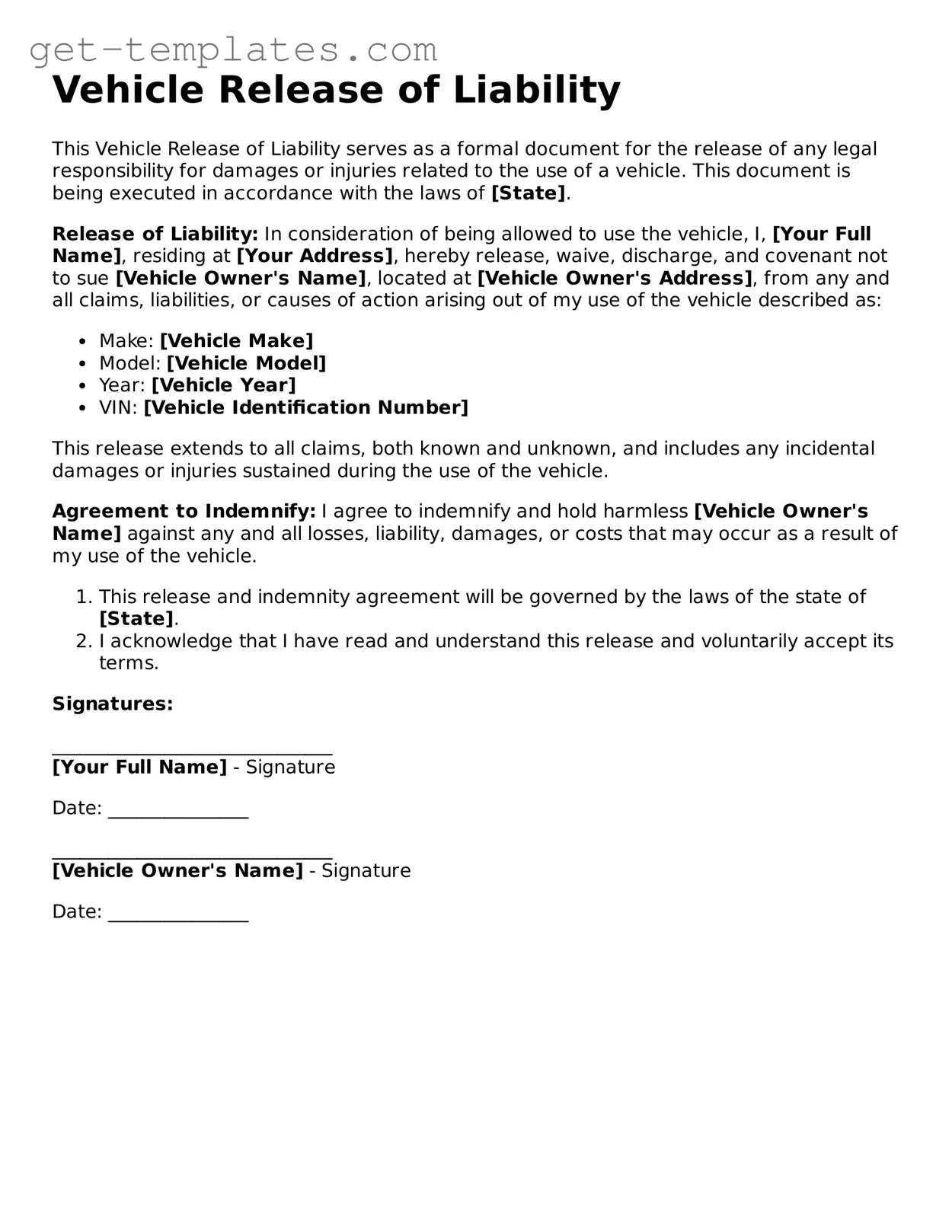Vehicle Release of Liability
This Vehicle Release of Liability serves as a formal document for the release of any legal responsibility for damages or injuries related to the use of a vehicle. This document is being executed in accordance with the laws of [State].
Release of Liability: In consideration of being allowed to use the vehicle, I, [Your Full Name], residing at [Your Address], hereby release, waive, discharge, and covenant not to sue [Vehicle Owner's Name], located at [Vehicle Owner's Address], from any and all claims, liabilities, or causes of action arising out of my use of the vehicle described as:
- Make: [Vehicle Make]
- Model: [Vehicle Model]
- Year: [Vehicle Year]
- VIN: [Vehicle Identification Number]
This release extends to all claims, both known and unknown, and includes any incidental damages or injuries sustained during the use of the vehicle.
Agreement to Indemnify: I agree to indemnify and hold harmless [Vehicle Owner's Name] against any and all losses, liability, damages, or costs that may occur as a result of my use of the vehicle.
- This release and indemnity agreement will be governed by the laws of the state of [State].
- I acknowledge that I have read and understand this release and voluntarily accept its terms.
Signatures:
______________________________
[Your Full Name] - Signature
Date: _______________
______________________________
[Vehicle Owner's Name] - Signature
Date: _______________
